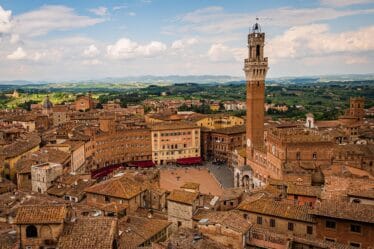
Commesso Fiorentino (Pietra Dura): The Art of Florentine Mosaic
Commesso Fiorentino, also known as pietra dura or Florentine mosaic, is a highly skilled artistic technique that originated in Florence, Italy, during the late Renaissance. This intricate art form involves creating detailed images by fitting together carefully cut pieces of semi-precious stones.
What is Commesso Fiorentino (Pietra Dura)?
- Definition and History: Commesso Fiorentino, commonly referred to as pietra dura (Italian for “hard stone”), is a decorative mosaic technique that uses thin slices of polished, hard stones to create vibrant, detailed images. This technique became popular in Florence in the late 16th century, particularly under the Medici family’s patronage. In 1588, the Medici established the Opificio delle Pietre Dure in Florence, a workshop dedicated to perfecting the art of pietra dura, which continues to influence this craft today.
- Types of Stones Used: This technique uses various semi-precious stones, such as lapis lazuli, malachite, agate, jasper, onyx, and amethyst. Each stone is chosen for its unique color, texture, and natural patterns, which are essential for creating the depth and realism that characterize pietra dura works.
- The Process of Creating Pietra Dura Art:
- Design and Preparation: The process starts with a detailed drawing of the intended design, often featuring floral patterns, landscapes, animals, or geometric motifs.
- Stone Cutting and Shaping: Skilled artisans meticulously select stones for different parts of the design and cut them into thin slices using diamond-tipped saws and other specialized tools. This step is crucial for achieving the high level of precision required for pietra dura.
- Assembly (Commesso): The term “commesso” refers to the process of assembling these stone pieces into a mosaic-like composition. The pieces are precisely fitted together like a jigsaw puzzle, with exceptional attention to detail to create nearly invisible seams.
- Polishing: After the assembly, the surface is polished to a smooth, glossy finish, enhancing the vibrant colors and natural beauty of the stones.
- Applications and Uses of Pietra Dura: The commesso Fiorentino technique was widely used in Renaissance and Baroque Florence for creating luxurious tabletops, cabinet decorations, altarpieces, and jewelry boxes. The artworks were highly valued for their durability, intricate detail, and vibrant color, making them popular among royalty and wealthy patrons.
- Key Characteristics:
- Remarkable Detail and Realism: Commesso Fiorentino is known for its ability to achieve a high level of detail and realism, similar to the effect of painting.
- Durability and Longevity: Due to the use of hard stones, these artworks are exceptionally durable, with many pieces remaining in excellent condition even centuries later.
- Unique Vibrancy: The natural colors and textures of the stones give the artworks a unique vibrancy and depth that are unmatched by other artistic techniques.
- Legacy and Modern Practice: The Opificio delle Pietre Dure in Florence remains a hub for the preservation and restoration of pietra dura artworks. Modern artisans continue to use the commesso Fiorentino technique, creating new works that blend traditional craftsmanship with contemporary designs.



